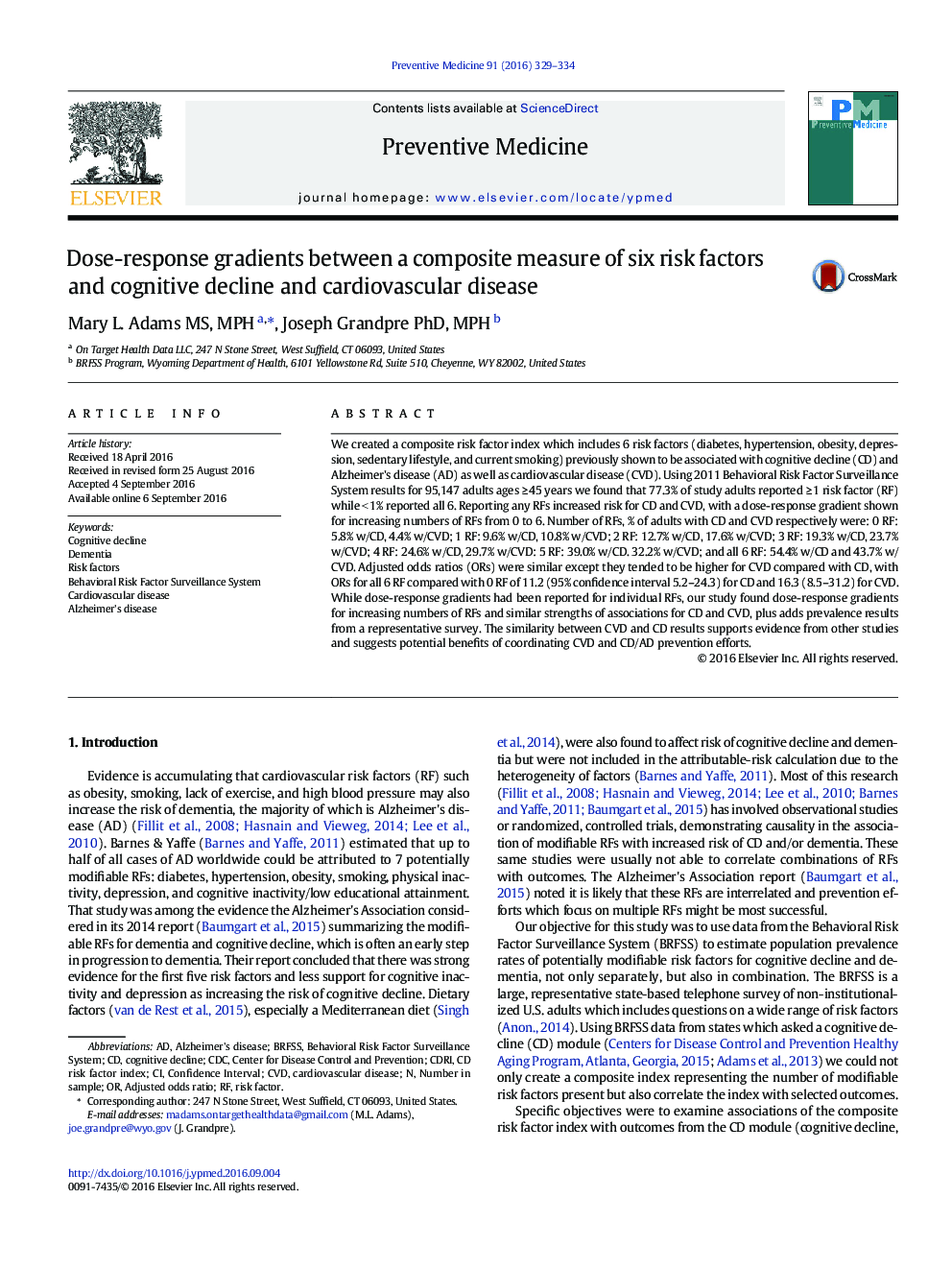| کد مقاله | کد نشریه | سال انتشار | مقاله انگلیسی | نسخه تمام متن |
|---|---|---|---|---|
| 6045994 | 1581623 | 2016 | 6 صفحه PDF | دانلود رایگان |
- We define a cognitive decline risk index (CDRI) of 6 risk factors.
- Risks are: high blood pressure, obesity, smoking, inactivity, depression, diabetes.
- Dose-response gradients shown between CDRI and cognitive decline and dementia
- Results similar to results for cardiovascular disease for same 6 CDRI levels
- Results suggest potential for primary prevention of cognitive decline & dementia.
We created a composite risk factor index which includes 6 risk factors (diabetes, hypertension, obesity, depression, sedentary lifestyle, and current smoking) previously shown to be associated with cognitive decline (CD) and Alzheimer's disease (AD) as well as cardiovascular disease (CVD). Using 2011 Behavioral Risk Factor Surveillance System results for 95,147 adults ages â¥Â 45 years we found that 77.3% of study adults reported â¥Â 1 risk factor (RF) while < 1% reported all 6. Reporting any RFs increased risk for CD and CVD, with a dose-response gradient shown for increasing numbers of RFs from 0 to 6. Number of RFs, % of adults with CD and CVD respectively were: 0 RF: 5.8% w/CD, 4.4% w/CVD; 1 RF: 9.6% w/CD, 10.8% w/CVD; 2 RF: 12.7% w/CD, 17.6% w/CVD; 3 RF: 19.3% w/CD, 23.7% w/CVD; 4 RF: 24.6% w/CD, 29.7% w/CVD: 5 RF: 39.0% w/CD. 32.2% w/CVD; and all 6 RF: 54.4% w/CD and 43.7% w/CVD. Adjusted odds ratios (ORs) were similar except they tended to be higher for CVD compared with CD, with ORs for all 6 RF compared with 0 RF of 11.2 (95% confidence interval 5.2-24.3) for CD and 16.3 (8.5-31.2) for CVD. While dose-response gradients had been reported for individual RFs, our study found dose-response gradients for increasing numbers of RFs and similar strengths of associations for CD and CVD, plus adds prevalence results from a representative survey. The similarity between CVD and CD results supports evidence from other studies and suggests potential benefits of coordinating CVD and CD/AD prevention efforts.
Journal: Preventive Medicine - Volume 91, October 2016, Pages 329-334
